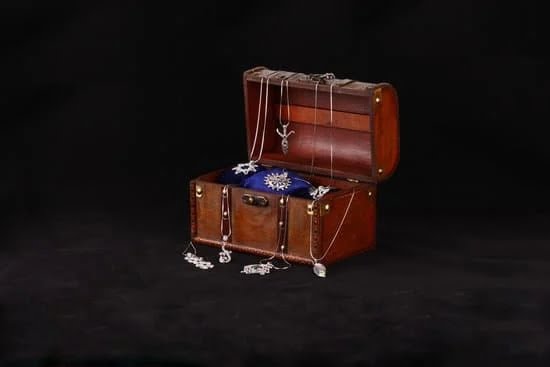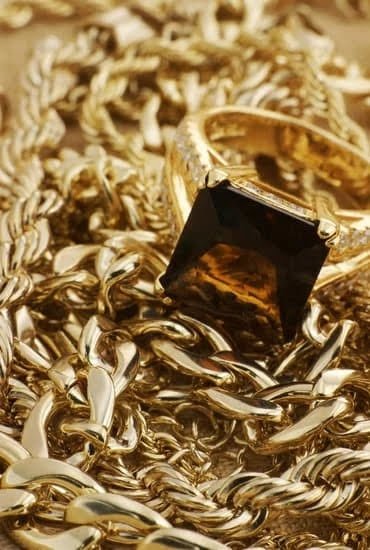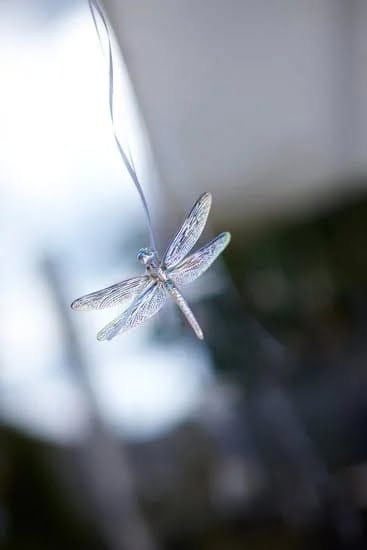Stainless steel is an incredibly durable material that can be used in various pieces of jewelry. That said, stainless steel jewelry is just as susceptible to everyday wear and tear as other types of jewelry, so repair may become necessary from time to time.
Fortunately, it’s fairly easy to make minor repairs on stainless steel jewelry pieces that are suffering from extensive use. If you own a piece of stainless steel jewelry, here are some tips for how to repair it.
The first step in the repair process is cleaning. To start, use a mild soap and water solution on a soft cloth to get rid of dirt and dust build-up on the surface of your stainless steel ring or pendant.
Then, once the surface is sufficiently clean, you can apply polishing agents specifically designed for stainless steel such as polishing cream and buffing pads. These products gently rub away any scratches or other cosmetic damage from the surface without damaging the metal itself.
For bigger issues like missing hinges or clasps, you may need a professional jeweler to fix them back into place using soldering tools or a small saw if necessary. They’ll also be able to assess any structural damage such as cracks that have occurred over time due to normal wear and tear; try not to attempt this kind of repair yourself as mishandling could do more harm than good in the end.
Make sure that when doing this type of repair you give your jeweler sufficient notice since they will likely have long waits during peak months like December due to increased demand before holiday parties and family events.
Finally, once all repairs have been completed, ensure regular cleaning with existing methods mentioned above such as warm soap and water solution or specific cleaners so that your stainless steel jewelry remains looking its best for many years down the line.
Re-polishing your pieces helps prevent rusting caused by contact with air molecules; this enhances an item’s luster and shine as well as helping maintain its value should you choose ever choose to sell it at a later date.
The Tools You Will Need for Jewelry Repair
When it comes to stainless steel jewelry repair, having the right tools makes a big difference. Having the proper tools not only makes it easier to complete a project but can also save time and energy in the process.
The most common items that are necessary for stainless steel jewelry repair include polishing cloths, pliers with different head sizes (flat nose, round nose, and bent end), screwdrivers for screws with slot heads, hammers for tapping back prongs into place, and punches which come in beneficial when removing excess metal from an item.
Polishing cloths are an essential part of any jewelry repair set because these will allow you to buff and shine metals again before reassembling the item together. Pliers come in handy when bending and shaping certain pieces of metal or manipulating components of a piece of jewelry.
An assorted set of screwdrivers is important when dealing with small screws that have a slot head as not having the proper size can make it difficult to remove them without damage to the screw or surrounding posts.
Similarly, hammers will be needed during moments where prongs need to be tapped back in place; using a hammer can help prevent damage being caused during this process. Lastly, punches are quite helpful in situations where excess metal needs to be removed from necklaces and other pieces since they come with interchangeable tips depending on what type of material needs content removal.
Overall, understanding what each tool is used for and why can really benefit any amateur trying their hand at stainless steel jewelry repair. While some of these items may seem intimidating for those unfamiliar with them finding tutorial videos online can go a long way in helping someone become comfortable with how each tool works and how it aides specific processes throughout projects.
Additionally there are many blogs or articles out there that encompass all one would need to know regarding stainless steel jewelry repairs from start to finish.
Choosing the Right Jewelry Repair Products
When it comes to repairing stainless steel jewelry, knowing which products to use is key. Specialty cleaners and polishes are essential for making sure your piece is looking its best. When selecting a cleaner or polish, make sure you choose one that is specific to stainless steel jewelry. This type of product will help protect the surfaces from corrosion and shine up the metal easily without causing scratches or harm to the piece.
Adhesives are another important element in jewelry repair. There are many types of adhesives available, depending on the type of job you need done.
For example, historically epoxies have been used when reattaching stones or securing findings, while cyanoacrylate (or ‘super glue’) is often used for small stone repairs or linking two pieces together securely. However as there are so many different varieties of each adhesive, you should always check with your local jeweler prior to sewing any adhesives on your jewelry as they can help suggest the best product for the job.
Finally, other tools may be necessary for completing certain repairs such as pliers and tweezers for working with stones and clasps or cylindrical files for restoring damaged areas on metal pendants or charms. Ultimately what products you select depend on the desired outcome of your repair project but understanding all of your options can ensure that your finished result looks like brand new.
Identifying the Problem Areas
Start by carefully inspecting the jewelry item to identify which parts need to be repaired. Pay close attention to any scratches, dents, or bends that may have formed over time due to impact with other objects. Replace missing or damaged components if needed. Make sure all relevant fasteners are in good working order before continuing with the repair process.
Next step is to use a quality stainless steel cleaner designed for jewelry items and clean the jewelry to prepare it for repairs. Using a soft cloth dampened with the cleaning solution and rubbing in circular motions should be enough to remove dirt, oil and water stains from the metal surface. Rinse off with cool running water after cleaning and gently dry with another soft cloth or let it air dry completely.
Lastly, there are various types of stainless steel metal polishes, pastes and compounds available on the market specifically created for metal jewelry reparation. For tough spots try using a metal cleaning paste or a metal polishing particular compound like Emery cloth or Simichrome polish and some fine graded sandpaper along with an abrasive sponge can help reduce scratches deeply embedded on your stainless steel jewelry piece while adding luster back into it once again like new.
Cleaning the Jewelry
Cleaning the stainless steel jewelry is an important first step in any repair. Depending on the type and extent of the damage, different cleaning products and techniques may be necessary. For example, mild soap and warm water can usually be used to remove surface dirt and debris.
However, more severely tarnished pieces may require a deeper chemical cleaning using a commercial steel cleaner or mildly acidic substances like lemon juice or vinegar. For manual cleaning, a soft cloth or fine brush should be used, making sure to clean in one direction only. Make sure that any harsher chemical that is being used follows safety protocols.
Polishing: The stainless steel needs to be buffed and polished before any other repair steps can begin
Stainless steel jewelry is often composed of various metals so it’s essential to make sure all surfaces are free from scratches before beginning repairs. Polishing should be done with a leather buffing wheel as these will not cause further damage or leave scratches on the surface.
An extra gentle polish can be used for Jewelry that has been heavily scratched or damaged as this will help restore its original shine without causing any negative impact on its overall condition. The use of a buffer grade polish such as jewelers green rouge or white diamond buffing compound is also recommended for this process if necessary depending on the degree of tarnish present on the piece.
Repairing Stainless Steel Jewellery: After polishing and cleaning, replacing broken parts and completing repairs with soldering
Using tools such as cutters, piers, files and tweezers you can then start replacing broken pieces by soldering them back together securely again using flux-cored silver solder rods on stainless steel jewellery which are designed specifically for this purpose and readily available online or in most hardware stores. For soldering small parts such as beads onto stainless steel jewellery I recommend investing in a mini battery powered soldering iron to ensure precision when working with hard-to-reach areas.
Be sure to check your local regulations regarding disposal of leaded solder fumes safely prior to beginning your repair project as well as have appropriate ventilation while you work to avoid inhaling any toxic fumes that could potentially arise during the process.
Setting and Securing the Stones
Setting and securing the stones in stainless steel jewelry is incredibly important as it ensures that each piece is of a high-quality. A stone can’t properly be set unless it has been properly secured in the jewelry. Having stones set wrongly can cause big problems, such as the stones becoming loose and easily falling out of their setting. This can result in a loss or damage of your beautiful jewelry.
The first step to properly setting the stones is to make sure that the metal in which they will be placed has enough strength and durability for them to be securely fixed into place. Then, you need to apply an adhesive that should also provide additional security to help prevent any movements from occurring over time.
Depending on the type of jewelry or stone being used, some adhesives tend to work better than others, so research what types are recommended for your particular piece of jewelry before selecting one.
After selecting an adhesive, you must be sure to accurately measure where on your metals and stones you want each piece positioned, ensuring that all pieces align with one another correctly. If there’s not enough space between pieces, gaps may appear causing an unwanted aesthetic look; however if too much space is left then pieces may not fit correctly together when soldering them together, resulting in a weak connection between all parts.
Once everything is aligned correctly then you can begin soldering everything together using heat and pressure combined ensuring that they stay in position permanently until further repairs are necessary at a future date.
Refinishing & Polishing the Jewelry
Stainless steel jewelry is popular with owners because it offers a strong and attractive finish that can last a lifetime. However, if your stainless steel jewelry needs some repair, there are several techniques you can use to restore its beautiful luster and keep it looking like new.
One popular technique for refinishing stainless steel jewelry is called buffing. To do this, use a buffing cloth made of cotton or leather and some special polishing compound designed specifically for stainless steel. Start by applying the compound to the area you want to work on, but make sure not to put too much pressure into the combing motion in order to avoid removing any of the metals in the piece.
Work in a consistent circular motion until the entire item looks polished and restored. If desired, you can also use a special stainless steel cleaner or wax after buffing, which will help protect your jewelry from scratches and dirt buildup.
Polishing can also be achieved with an abrasion or ultrasonic method, which uses small grits of abrasive material such as diamonds or emery to remove scratches and dullness on metal surfaces. This technique is highly effective at achieving even polishing without leaving behind any rough patches, as well as restoring intricate details often found on jewelry items.
Even with built-in resistance against tarnish and corrosion, these alternative methods provide extra protection while bringing out the aesthetic of your piece’s original sheen.
No matter what method you choose to use when repairing your stainless steel jewelry, these simple steps will ensure the best results when it comes time for restoring its beauty and luster again in the future. With proper maintenance & occasional repolishing-as needed-your stainless steel jewelry should remain looking like new for many years to come.
Troubleshooting Common Jewelry Repair Issues
When it comes to a loose stone in stainless steel jewelry, the first step should be to identify what type of setting is used. The two commonly used settings are claw and pave. Claw settings surround the stone with metal claws that hold the stone in place, while pave settings have tiny beads that hold the stones together in an orderly fashion.
If you know which setting your stainless steel jewelry uses, it will make the repair process much easier. For instance, if there’s a loose stone in a claw setting, simply use a pair of pliers to tighten or replace the claws. With a pave setting you may need to remove some stones and reset them for better stability.
If there’s any kind of breakage or cracking within the stainless steel itself, depending on the degree of damage this may require professional attention. If it’s just one broken link or any minor issue such as re-polishing scratched surfaces – these are all repairs that can be done at home using materials from any hobby stores.
Start by using needle nose pliers to remove any broken pieces and then solder with a soldering gun and silver solder paste (which is specially designed for stainless steel). As solder welding needs extreme precision and temperatures, we recommend seeking help from professionals if necessary.
Once all repairs are completed there’s still more work ahead – polishing all parts so that they look like new again. Use a specialized abrasive wheel and grinding media to polish away scratches and other marks on stainless steel surfaces until they regain their former shine and brilliance.
However remember to never polish tight areas (i.e circles) as this may cause more damage than good; instead opt for a fine grade sandpaper followed by careful buffing with soft cloths for these areas instead. Following these steps will definitely ensure your beloved piece of stainless steel jewelry looks its best once again.
Caring for Jewelry After Repair
When you have successfully repaired your stainless steel jewelry piece, it is important that you know how to adequately look after the piece in order for the repair to remain for a long period of time. The first and most important step is to clean the piece regularly.
Depending on the type of cleaning needs, you can use a brush with warm water and some mild dish soap or a professional jewelry cleaning solution. This should be done by brushing gently to avoid scratching as stainless steel is prone to scratches, which can lead to rust.
Next, it is essential that you periodically polish your stainless steel jewelry. Traditional methods include using a polishing cloth alongside some jewelry cleaner on the piece, while another recommended method includes using baking soda paste with water and then gently scrubbing with an old toothbrush.
This helps remove any dirt build-up and restores luster back onto the piece. However, do not try and polish away an area containing a repair as this may disturb it or cause further damage such as loosening screws or stones.
Finally, always ensure you store all pieces of stainless steel jewelry separately from each other. The best option for storing would be individual fabric bags or compartments inside a closed case/box due to it helping protect against moisture and dust buildup which can rust the metal over time if kept in close contact with one another.
It’s also important that when handling your pieces that you don’t pull too hard on them as this could distort them form their original shape or even cause tiny additional scratches on their surfaces which affect its overall appearance after cleaning/polishing. With these steps followed correctly your repair should last as long as possible.

Welcome to my jewelry blog! My name is Sarah and I am the owner of this blog.
I love making jewelry and sharing my creations with others.
So whether you’re someone who loves wearing jewelry yourself or simply enjoys learning about it, be sure to check out my blog for insightful posts on everything related to this exciting topic!





